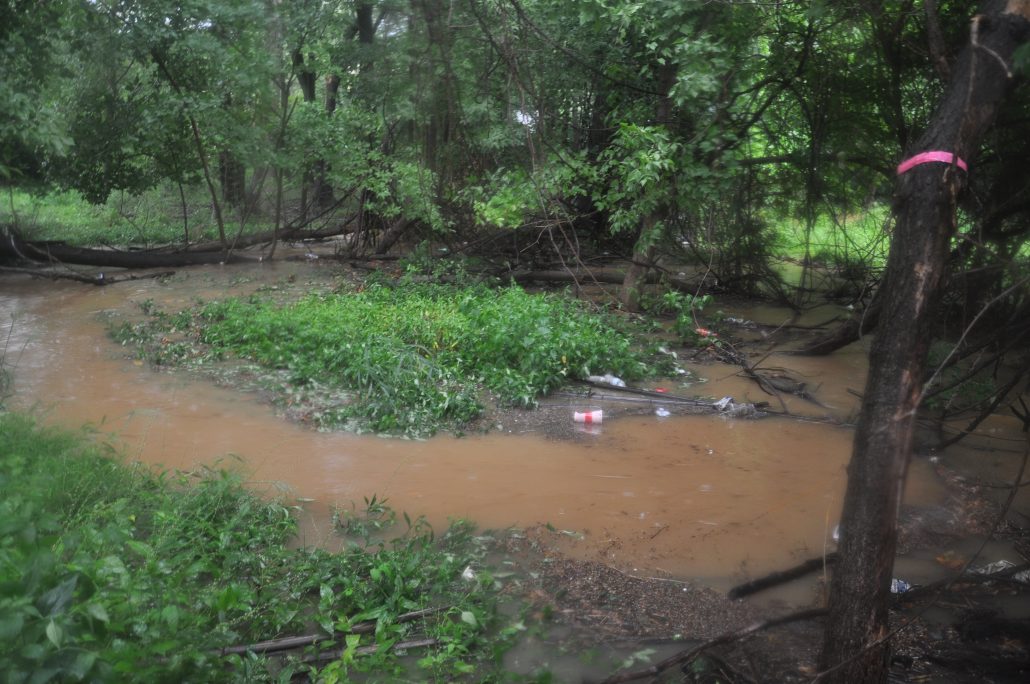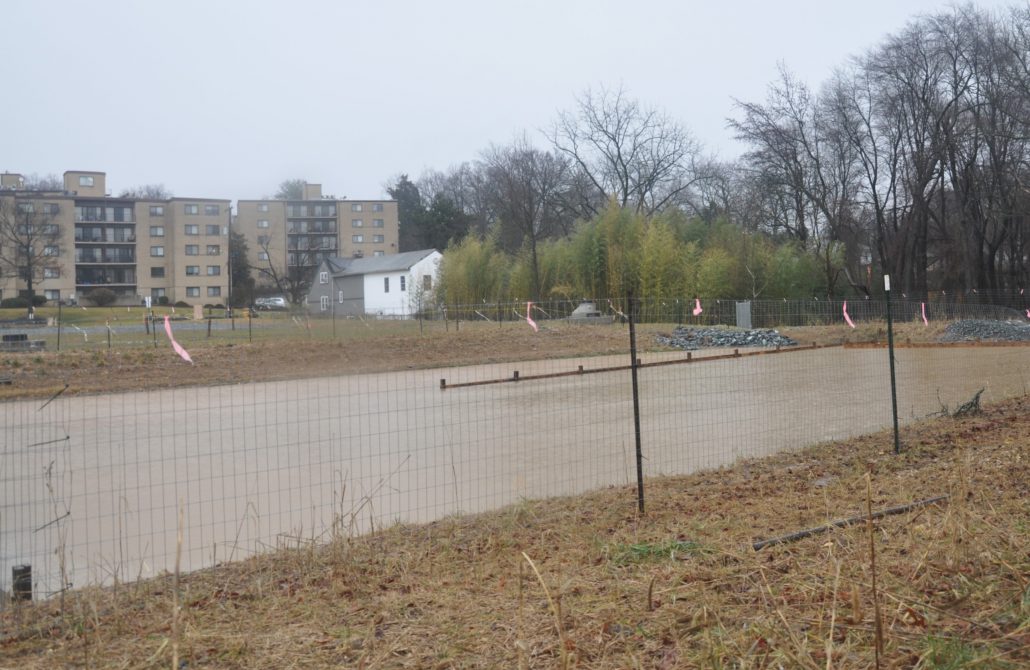By Rebecca Marx
On Jan. 14, the Prince George’s Climate Action Commission submitted a draft climate action plan (CAP) to the county council for consideration, along with a report containing public comments on the plan.
The draft plan aims to reduce harm to county residents from floods, severe storms and extreme heat.
Among the climate adaptation strategies, the CAP proposes a ban on new development in flood plains.

The City of Hyattsville voted to support the plan on Dec. 6, 2021. In a Dec. 9 letter offering that support, the late Mayor Kevin Ward said there should be no ability to waive bans on development in flood plains.
On Jan. 10, the city council cited the CAP’s prohibition on flood plain development again when they voted to send a letter to the Maryland Department of the Environment asking them to reject Werrlein Properties’ application for a Maryland Wetlands and Waterways Permit. The permit would allow Werrlein to develop the former Washington Suburban Sanitation Commission (WSSC) parking lot next to Driskell Park. Part of that parcel sits in the 100-year flood plain, where there is a 1% annual chance of flooding.
Hyattsville saw substantial flooding in September 2020 near both the Sacred Heart Home and WSSC construction sites. According to a flood risk assessment, created by The First Street Foundation, 201 properties in Hyattsville have a greater than a 26% chance of being severely affected by flooding in the next 30 years. Many of those properties are along 40th Avenue or near Driskell Park.
Climate Action Plan basics
Higher levels of greenhouse gases in the atmosphere trap heat and change weather patterns, causing more severe storms, floods and extreme heat events. The CAP says greenhouse gas emissions decreased in the county by 15% between 2005 and 2018, primarily from the buildings sector, even as the population grew by 9%.
But this decrease is only a fraction of the goal the CAP establishes: a 50% emissions reduction by 2030, compared to 2005 levels. The target aligns with the State of Maryland’s proposed Greenhouse Gas Emissions Reduction Act prepared for Gov. Larry Hogan in February 2021.
The CAP recommends 26 actions, which, together, would reduce greenhouse gas emissions, increase climate resilience, improve community health and quality of life, and create local jobs. The CAP details a path forward for each of the actions, and suggests how progress can be measured. Now, the county council is considering whether to adopt, fund and mandate the implementation of the plan.
Reducing transportation emissions
Transportation, primarily vehicle emissions, causes 48% of emissions in the county. The CAP suggests investing in mixed-use development where housing, jobs and public infrastructure are concentrated near public transit.
The CAP looks to expand charging infrastructure to support electrical vehicle use and proposes county fleet electrification.
City councilmember Danny Schaible (Ward 2), an electric vehicle owner, submitted a public comment to the plan, “I would like to see new zoning requirements to mandate reasonable percentages of EV [electric vehicle] parking spots for grocery stores, parking garages, multifamily parking, and gas stations.”
Reducing emissions from buildings
The buildings sector contributes 45% of emissions (23% residential and 22% commercial).
To reduce these emissions, the CAP recommends increasing renewable energy use through residential solar installations. The CAP also supports measures to improve the energy efficiency of buildings, such as updated lighting, windows and insulation.
Trees, green space and agriculture
The action plan recommends a “No Net Loss” tree conservation regulation. Trees both capture carbon and lower surface temperature through shade and evapotranspiration. While 52% of the county is covered by trees or green infrastructure (44% forest, 8% street trees or landscape plantings), Hyattsville’s tree cover was only 31.41%, according to a July 2020 report. Councilmember Ben Simasek (Ward 3) commented on the plan, “I’d like to see increasing tree canopy, rather than just maintaining existing canopy, [as] a goal.”
The CAP prioritizes preserving and restoring natural resource areas, agricultural open space and green infrastructure to reduce flood risk, protect water quality and reduce the prevalence of urban heat islands. Hyattsville resident Melissa Shweisguth addressed the importance of restoring and improving current ecosystems on public and private lands: “I feel like that really needs a headline recommendation as opposed to being buried.”

The action plan highlights agricultural practices that protect soil health, improve water retention and increase carbon sequestration to promote a healthy low-carbon food system.
Flood preparation
The CAP advocates expanding flood mitigation programs, evaluating dams and levees and implementing climate resilient stormwater management.
The CAP draws attention to the effect that impervious surfaces, like roads and parking lots, have on the amount of stormwater runoff into local streams.
Between 2018 and 2021, more than 4,000 flooding events involving basements, backyards, streets and sinkholes were reported in the county.
Heat resilience
Neighborhoods with higher concentrations of pavement and lower tree cover experience more extreme heat. The CAP says these same neighborhoods tend to have higher rates of poverty and homelessness, and higher proportions of people of color.
The CAP proposes that resilience hubs be established in safe public spaces, like libraries and churches, to serve the needs of vulnerable populations during extreme heat or other emergency situations. Resilience hubs, like those in Baltimore, could serve as places for residents to cool down, charge phones or refrigerate medicine during an emergency.
Equity and community engagement
The action plan highlights how the county can incorporate equity in its approach to addressing climate change. The plan proposes conducting vulnerability assessments to understand which specific subpopulations are more at risk.
It also proposes accessible engagement opportunities for underserved communities throughout the planning and implementation process and public education to change individual behavior.







